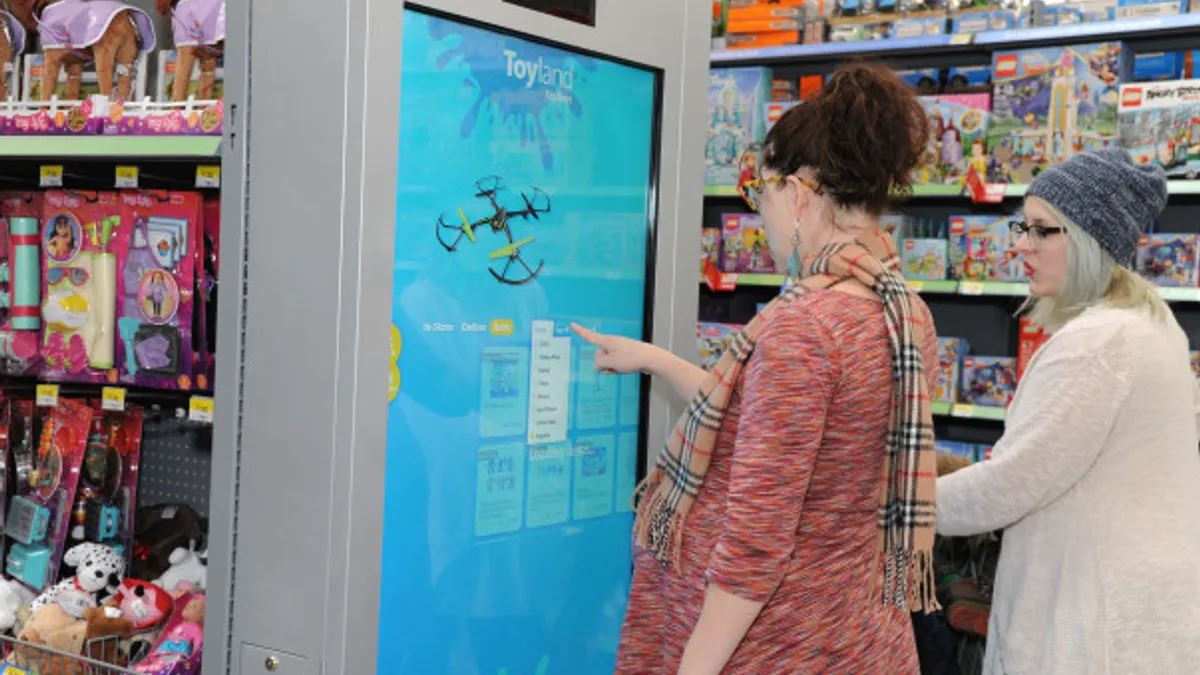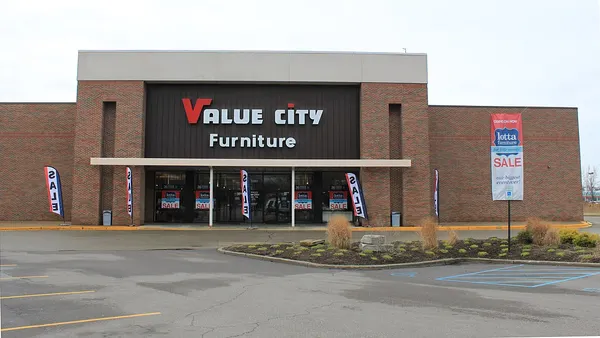Dive Brief:
-
Wal-Mart Stores Inc. last week said it’s “testing new approaches in two recently opened supercenters" in Tomball, TX, and Lake Nona, FL featuring new layouts and technology to improve the shopping experience, according to a corporate blog post written by Jeff Muench, senior director of Business Development.
- The layouts bring services like beauty salons and tech repair near relevant merchandise. Health and wellness departments are consolidated, and baby, toys, kids' apparel and kids' shoes “form a single destination to ease mom’s shopping journey,” Muench said.
-
The stores also include Wal-Mart’s revamped “Scan and Go” checkout technology, which works with smartphones and handheld devices provided by Wal-Mart. Plus, interactive information projected onto tables and walls allow customers to learn about connected devices like Google Home, Apple TV, Nest, baby monitors and connected thermostats. Interactive screens also provide an “endless aisle,” featuring items available online but not necessarily found in stores, according to the blog. Customers can also page store staff via WiFi-connection buttons throughout the store.
Dive Insight:
These stores in Texas and Florida join a similar experiment in Myrtle Beach, SC and elsewhere that have revamped grocery aisles. In addition to the merchandising layout and technology described in Wal-Mart’s blog post, the retail giant is emphasizing its in-store pickup and seamless checkout.
Wal-Mart Stores Inc. U.S. President Greg Foran has been talking about improvements to stores for several years, but the pressure is on as consumers and retailers alike have blurred the lines between e-commerce and brick-and-mortar shopping. And Wal-Mart isn’t the only one: Target executives in March unveiled a series of initiatives designed to reverse the big box retailer’s same-store sales declines, including an investment of more than $2 billion of capital in 2017 and more than $7 billion over the next three years. The company will use about $1 billion of operating profits this year to improve brick-and-mortar and digital operations.
Traditional stores like Wal-Mart and Target have good reason to make major improvements to their physical stores: Superior experiences and ease of shopping can not only entice more customers to visit, but research shows stores also enhance e-commerce sales. In a report last year, Moody's Investors Service cautioned that closing a physical location reduces a retailer’s presence in the market area, noting that online sales often decrease in zip codes surrounding a shuttered store.
While e-commerce is generally viewed as a space that has matured since Amazon’s entry two decades ago, omnichannel efforts from brick-and-mortar retailers are ensuring that e-commerce remains in a state of disruption, Moody's contends. Stores are key to success, by serving as logistical fulfillment hubs and by associates sealing the deal on the sales floor, according to Moody’s.















